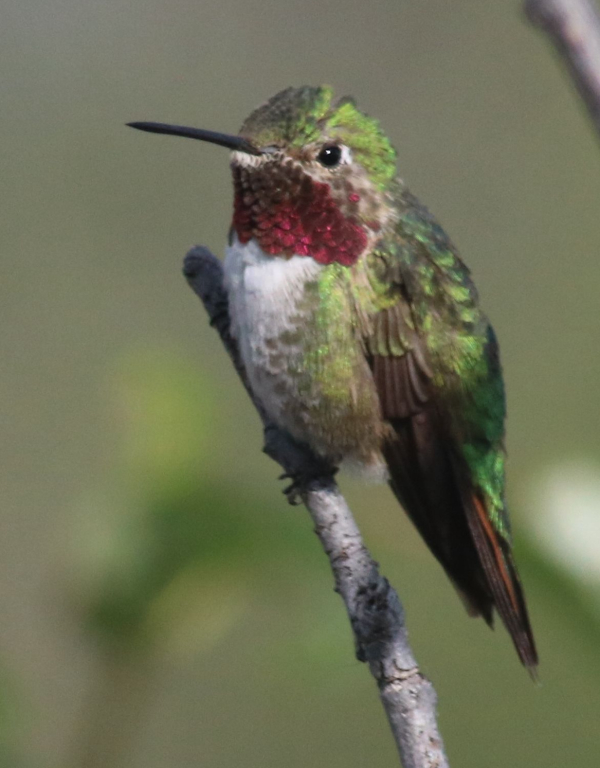
New research indicates wild Broad-tailed Hummingbirds can see ultra-violet colors among others beyond the ability of human eyesight. Hummingbirds may see the world in a much different way than what humans see.
|
Scientists have long known that birds probably have better color vision than humans do, and according to a new study, hummingbirds definitely see colors that humans cannot detect. In fact, hummingbirds may see the world in a much different way than what humans see, considering they see the ultra-violet spectrum, which includes colors such as UV-green and UV-red. Recent field experiments with wild Broad-tailed Hummingbirds near the Rocky Mountain Biological Laboratory in Colorado provides new insights into the topic.
Like most primates, humans have tri-chromatic eyesight; that is, our eyes have three types of color-sensitive receptors or cones – blue, green, and red. But birds have four color cones, meaning they have tetra-chromatic eyesight.
With our three color cones, we can see the colors of the rainbow – red, orange, yellow, green, blue, indigo, and violet – the so-called spectral hues. We can also see one pure non-spectral color – purple – because it stimulates our red and blue cones simultaneously.
Birds’ four color cones theoretically let them discriminate a broader range of colors, including the ultra-violet spectrum, which includes colors such as UV-green and UV-red. But so far, researchers have made few investigations into what colors birds can actually see.
Recently, Mary Stoddard, a Princeton University evolutionary biologist and her colleagues carried out a series of field experiments with wild Broad-tailed Hummingbirds near the Rocky Mountain Biological Laboratory outside Crested Butte, Colorado. The remarkable results revealed the birds could discern spectral-colored feeders from feeders in non-spectral colors.
“Seeing them do this right in front of my eyes is one of the most exciting things I’ve ever witnessed,” Dr. Stoddard shared. The research was published this week in the journal Proceedings of the National Academy of Sciences.
“Even when the colors looked the same to us; for example, when the birds had to choose from a feeder colored UV-green and one that was simply green, they could see the difference,” Dr. Stoddard added.
Dr. Karen Carleton, an evolutionary biologist and professor at the University of Maryland, communicated that the study shows that “through hummingbird eyes, the world might look totally different to what we see.”
The study is a “big step forward,” offering the most thorough look at how birds distinguish color to date, said Dr. Trevor Price, an evolutionary biologist and professor at the University of Chicago, adding, “We’re really only beginning to scratch the surface in our understanding of color vision in animals.”